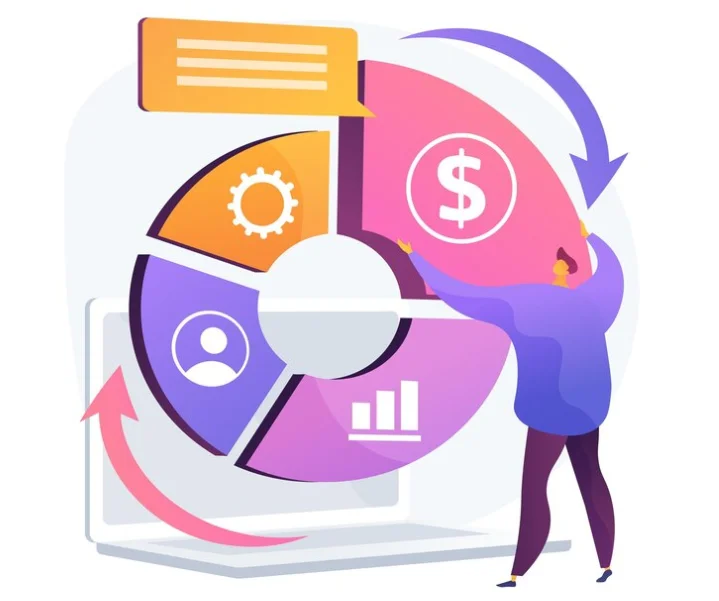What Is Inside Sales? Everything You Need To Know
What Is Inside Sales? Everything You Need To Know
The sales field is shifting, and one strategy stands out as a true game-changer: inside sales. Unlike the old-school methods of traveling to meet clients or spending hours in face-to-face meetings, inside sales use digital tools, streamlined processes, and data-driven approaches to deliver results faster and more effectively.
So, what is inside sales exactly, and why is it becoming the backbone of modern sales teams? In this article, we will break down the essentials, explaining how it works and why it is essential for any forward-thinking business.
What Are Inside Sales?

Inside sales refers to the process of selling products or services remotely using the phone, email, or virtual meetings instead of face-to-face interactions. This approach takes advantage of technology to reach, engage, and close deals with potential customers from within an office or a remote location. It is commonly used in B2B industries, SaaS companies, and increasingly in B2C sales.
Key Takeaways:
- Inside sales refers to transactions where sales personnel reach out to customers using phone or online methods.
- In contrast, outside sales involve meeting customers in person and engaging in physical interactions.
- Inside sales teams often combine tools and strategies to convert prospects into customers through qualification, contact, nurturing, and closing sales.
- For improved efficiency, inside and outside sales teams can be paired to assist each other in tasks like lead generation, thereby increasing sales.
- More and more consumers are choosing to purchase goods and services online or over the phone.
- Inside sales use technology and remote communication to cut costs, work more efficiently, and improve teamwork. They also create specialized roles, scale quickly, and adapt to how customers’ buying habits change.
- Inside sales requires skills like strong listening, organized strategy adherence, rapport building, and reliability to connect with customers and close deals effectively.
How does inside sales work?
Inside sales teams often use a combination of tools and strategies to convert prospects into customers. The process includes the following steps:
- Lead Generation: Identifying potential customers through channels like social media, inbound marketing, referrals, and outbound outreach.
- Qualifying Leads: Evaluating the prospect’s needs, budget, and fit to see if customers match the product well.
- Initial Contact: Reaching out to qualified leads via cold calls, personalized emails, or professional platforms like LinkedIn to initiate a conversation.
- Nurturing Leads: Building a relationship with the lead through regular follow-ups, providing relevant resources, and addressing their pain points.
- Closing Sales: Engaging in negotiations, overcoming objections, and finalizing agreements to convert leads into paying customers.
This approach allows inside sales teams to work efficiently, especially when supported by tools such as CRM software, email automation, and analytics platforms. These tools help manage customer information & interactions, automate follow-ups via email, and analyze customer behavior and preferences.
Differences between inside sales and outside sales
| Feature | Inside Sales | Outside Sales |
|---|---|---|
| Location | Conducted remotely | Face-to-face interactions |
| Tools used | Phone, email, CRM, video calls | Travel, meetings, presentations |
| Cost | Lower operational cost | Higher travel and logistics cost |
| Sales Cycles | Shorter | Longer |
| Reach | Global | Limited by geography |
Below is a more detailed comparison between inside sales and outside sales:
Location
- Inside Sales: Take place in an office or home setup. Inside sales representatives engage with customers using digital communication tools like phones, emails, and video conferencing.
- Outside Sales: Involve face-to-face interactions where sales representatives travel to meet customers at their locations, such as offices, homes, or events. This approach is common for building personal relationships or closing high-value deals.
Tools Used
- Inside Sales: Rely heavily on technology, including CRM software, email automation, phone systems, and video conferencing platforms. These tools streamline processes like lead management, customer interaction tracking, and virtual presentations.
- Outside Sales: Primarily uses physical tools and methods such as travel, on-site presentations, printed materials, and in-person meetings. While digital tools like CRM are also utilized, the focus is on personal engagement.
Cost
- Inside Sales: Significantly more cost-efficient since it eliminates expenses like travel, lodging, and on-site logistics. The main costs are associated with software subscriptions, internet connectivity, and equipment like headsets or laptops.
- Outside Sales: Require higher operational budgets due to travel costs, accommodation, meals, and other logistics involved in meeting clients in person. This can make outside sales less scalable for some businesses.
Sales Cycle

- Inside Sales: Often has a shorter sales cycle, as communication and decision-making can happen faster through virtual interactions. This makes it suitable for high-volume or lower-value sales that don’t require extensive in-person persuasion.
- Outside Sales: Generally require a longer sales cycle because of the time required for travel, scheduling meetings, and building trust through personal interactions. It’s ideal for high-value transactions where buyers expect personalized attention.
Reach
- Inside Sales: Reach a global audience without geographical constraints. By leveraging digital tools, inside sales teams can engage with prospects from anywhere, expanding market potential.
- Outside Sales: Limited by geography, as representatives must physically visit prospects. This approach is more practical for local or regional markets or when targeting a specific niche where in-person engagement is critical.
Benefits of inside sales
By using technology and remote communication, inside sales have changed the way businesses interact with customers. Below are the key benefits that make inside sales an essential strategy for modern businesses:
Reduce costs and improve efficiency
Inside sales teams use CRM systems, marketing automation tools, social analytics software, and social selling platforms to identify and engage prospects efficiently. These tools help shorten the sales cycle and reduce the cost per acquisition, leading to more cost-effective operations for companies.
Have more time for ancillary tasks

Sales isn’t just about closing deals; it also involves significant administrative and prospecting tasks to accompany a successful sale. Inside sales representatives, who primarily work from the office, are better positioned to manage these responsibilities effectively. As a result, operations run more smoothly, and overall productivity improves.
Predict Revenue
With CRM systems, businesses can predict how much revenue each salesperson will generate and measure their return on investment ( ROI). Inside sales teams work closely with marketing departments. This collaboration enables a lead-focused approach that keeps the sales pipeline full and revenue streams more predictable.
Create opportunities for specialized roles
Inside sales teams can be segmented to handle prospects at various stages of the sales funnel. Traditional field representatives focus on meeting quotas and might overlook opportunities that take longer to close or are less immediately profitable.
Inside sales reps, however, can focus on less profitable opportunities, which may become highly valuable over time. By clearly defining roles and responsibilities within your inside sales team, you can ensure that all potential buyers are effectively reached at every stage of their journey.
Enhance collaboration and coaching

The close proximity of sales reps to their managers in inside sales boosts team cohesion and provides better opportunities for coaching and training. It also reduces the time needed to onboard new employees.
Scale operations easily
Inside sales teams can grow quickly without the added expenses of relocation or travel. This scalability makes it easier for businesses to adapt to market demands or expand their reach without operational challenges.
Adapt to changes in buyer behavior
Today’s buyers prefer digital campaigns over traditional face-to-face interactions. Inside sales teams can take advantage of this shift by using digital marketing strategies. They can also find opportunities for cross-selling and upselling to increase sales.
How to Succeed in Inside Sales
Meeting complex customer needs requires a well-developed team and a refined strategy. Here are some important points to consider when forming your plan.
Leverage the right software
Inside sales success hinges on effective lead management and precise targeting. You need to equip teams with the right tools, such as:
- CRM platforms for organized data and streamlined customer interactions.
- Web conferencing tools for seamless virtual meetings.
- Social analytics software to gain insights into customer behavior and preferences.
These SaaS solutions ensure a data-driven approach. They help you capitalize on opportunities and close deals effectively.
Align Sales and Marketing

The age-old tension between sales and marketing teams can hinder success. To create synergy:
- Ensure sales teams communicate their needs and feedback clearly.
- Encourage marketing to run transparent campaigns and provide actionable leads.
- Foster collaboration through shared goals and open communication.
Organize Your Team Strategically
Structure your inside sales team based on your specific business needs. Possible segmentation options include:
- Market segment (e.g., B2B vs. B2C).
- Product or service focus.
- Customer journey stages (e.g., lead generation, closing).
- Geographic location for tailored outreach.
Clearly defined roles and responsibilities help avoid confusion and increase team productivity.
Motivate The Team
Inside sales can be challenging, and keeping your team motivated is key to overcoming obstacles. Consider these tactics:
- Celebrate small wins to maintain morale.
- Provide tools for real-time performance tracking or periodic reviews, depending on team preferences.
- Encourage resilience by reframing rejections as learning opportunities.
Invest in Ongoing Training
Complex products and services demand skilled sales professionals. Support your team with:
- Continuous training programs to refine sales techniques.
- Sales enablement technologies to simplify complex transactions.
- Regular knowledge-sharing sessions to keep the team updated on industry trends.
4 Must-Have Skills for Inside Sales

Inside sales is a dynamic field that needs specific skills to connect with potential customers, build trust, and close deals. By mastering these four essential inside sales skills, you can improve your performance and achieve your sales goals.
Listening
When interacting with customers remotely, sales reps can’t rely on body language to grasp what customers are communicating (and what they aren’t). Therefore, they need strong listening skills and must concentrate on how customers respond to questions.
Adhere to the organized strategy
Inside sales representatives are responsible for managing numerous accounts simultaneously. This requires them to have critical information about each account readily accessible at all times. Effective management ensures that reps can quickly respond to customer inquiries, tailor their sales approach, and maintain strong relationships with their clients.
Build rapport
Building relationships over the phone or email is harder than in person. Customers can easily detect insincerity. Broad statements or unrealistic promises will definitely turn potential customers away.
Reliability
People often find it harder to trust what they hear over the phone. This means inside sales reps must carefully manage their time to keep every promise, big or small. If a customer expects a call at 7 PM, it’s crucial to call on time.
Conclusion
Inside sales isn’t just a new approach- it’s a better way of selling. It’s about maximizing efficiency, connecting with clients more effectively, and achieving results that traditional sales methods can’t always deliver.
By understanding and adopting inside sales, you can position your business to succeed in an increasingly competitive and tech-driven market.






![Top 20+ Must-have Shopify Apps for 2025 [Free & Paid] - Mageplaza](https://cdn2.mageplaza.com/media/blog/must-have-shopify-apps/top-must-have-shopify-apps.png)
![[2025 Updates] Top 10+ Upsell Apps for Shopify - Mageplaza](https://cdn2.mageplaza.com/media/blog/best-upsell-shopify-app/cover.png)